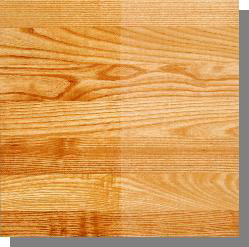
Ash
Appearance: Color Heartwood is light tan to dark brown; sapwood is creamy white. Similar to white oak but more yellow.
Grain: Bold, straight, moderately open grain with occasional wavy figuring, and can have strong contract in grain in plainsawn boards.
Durability: Elastic, hard, excellent shock resistance.
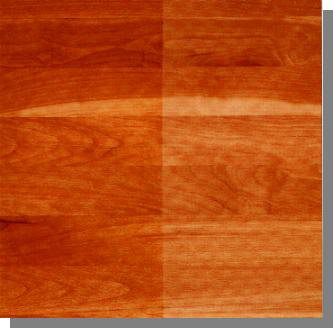
Beech
Appearance: Color: Reddish brown heartwood, with pale white sapwood.
Grain: Mostly closed, straight grain, uniform texture.
Durability:Elastic, hard; excellent shock resistance. Wears wells, stays smooth when subjected to friction - popular for factory floors.
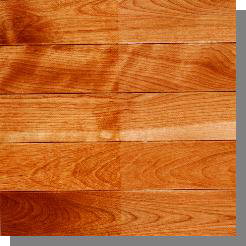
Birch
Appearance: Color: Sapwood is creamy yellow or pale white in yellow birch; heartwood is light reddish brown tinged with red. Sweet birch has light colored sapwood and heartwood is dark brown tinged with red.
Grain: Medium figuring, straight, closed grain, even textured. Occasional curly grain or wavy figure in some boards.
Durability: Hard and stiff; very strong.
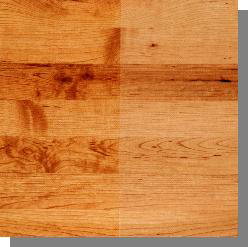
Black cherry
Appearance: Color: Heartwood is dark to reddish brown, lustrous; sapwood is light brown to pale with a light pinkish tone.
Grain: Fine, frequently wavy, uniform texture. True quatersawn has distinctive flake pattern. Texture is satiny, with some gum pockets.
Durability: Strong, moderately hard. Usually considered too soft for an entire floor-mostly used for accents and borders.
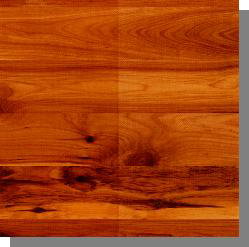
Cypress
Appearance: Color: Sapwood is cream colored; heartwood is honey-gold to brown with darker knots throughout.
Grain: Closed
Durability: Excellent.
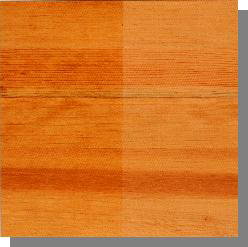
Douglas fir
Appearance: Color: Yellowish tan to light brown heartwood. Sapwood is tan to white Heartwood may be confused with that of Southern yellow pine. Radical color change upon exposure to sunlight.
Grain: Normally straight, with occasional wavy or spiral texture.
Durability: Durable but easily dented like soft pine

Heart Pine
Appearance: Color: Heartwood is yellow after cutting and turns deep pinkish tan to warm reddish brown within weeks due to high resin content.
Grain: Dense, with high figuring. Plainsawn is swirled; rift or quatersawn is primarily pinstriped. Curly or burl grain is rare.
Durability: Natural resistance to insects in heartwood; dense.
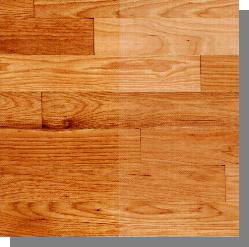
Hickory Pecan
Appearance: Color: Pecan heartwood is reddish brown with dark brown stripes; sapwood is white or creamy white with pinkish tones. Hickory heartwood is tan or reddish.
Grain: Pecan is open, occasionally wavy or irregular. Hickory is closed, with moderate definition; somewhat rough-textured.
Durability: Combination of strength, hardness, toughness and stiffness not found in other commercial wood.
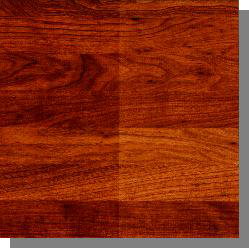
Mesquite
Appearance: Color: Light brown to dark reddish brown.
Grain: High in character, with ingrown bark and mineral streaks. Used in end-grain flooring blocks.
Durability: Dense and very strong.
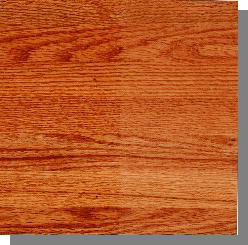
Red Oak
Appearance: Color: Heart and sapwood are similar with sapwood lighter in color; most pieces have a reddish tone.
Grain: Open, slightly coarser than white oak. Plainsawn boards have a plumed or flared grain appearance; riftsawn has a tighter grain pattern, low figuring; quartersawn has a flake pattern, sometimes called tiger oak, tiger rays or butterflies.
Durability:Stiff & dense, resist wear, less durable than white oak.
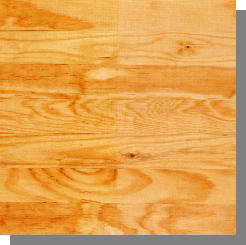
Yellow Pine
Appearance:Color: Heartwood varies from light yellow/orange to reddish brown or yellowish brown; sapwood is light tan to yellowish white.
Grain:Closed, with high figuring; patterns range from clear to knotty.
Durability: Soft, fairly durable, not as resist to scuff, & dents as true hardwoods.
*More additional styles are available. Call a customer service representative today for more information.

